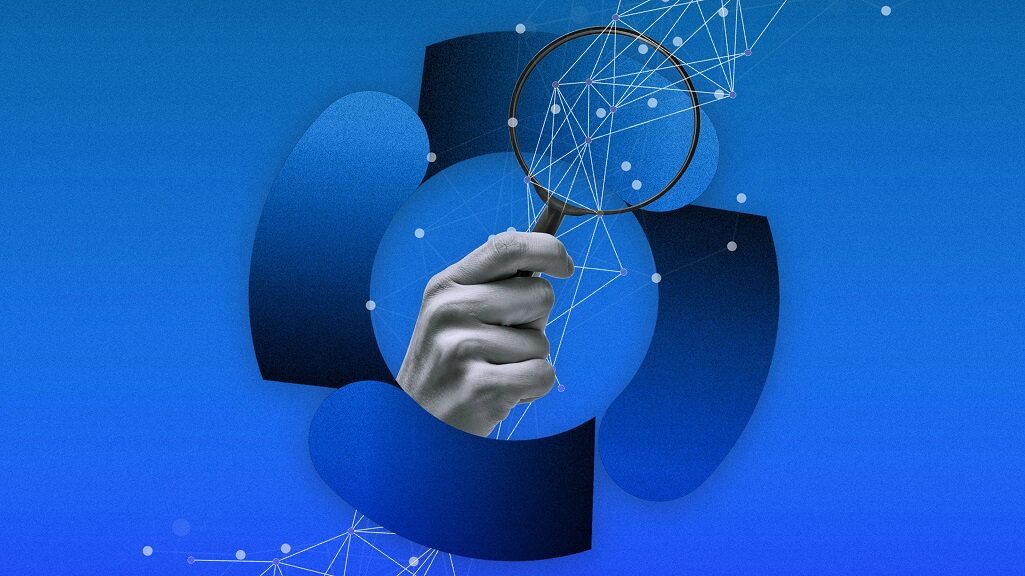- | 9:00 am
Why job seekers need an AI-powered human recruiter in their corner
They’re using new AI-powered talent platforms like Paraform to find clients, identify the most plum jobs, and focus on the parts of being a matchmaker only they can do—for now.

“I think models will be better at interviewing than people,” said Victor Lazarte, the founder of mobile games company Wildlife Studio, on venture capital podcast The Twenty Minute VC in April.
You’d think that John Kim, the CEO of a San Francisco-based AI recruiting company, would wholeheartedly agree. But you’d be wrong.
“There needs to be a human in the loop for recruiting,” says Kim, CEO of Paraform, which raised $20 million during its Series A funding in June.
That’s good news for recruiters, job seekers, and the companies looking for talent. Businesses are leaning more on AI to reduce hiring, but also putting more focus on finding the best people for the jobs they are filling. Job applicants want to make sure they are getting the kind of treatment that puts them in the best possible position to get a great new role. And recruiters want to sort through the noise in this buyers’ market and do what they do best.
In 2023, John Kim and his cofounder, Jeffrey Li, surveyed their peers, other founders, and people in their coworking space, thinking up their next startup idea. They asked: what’s the biggest problem you’re trying to solve? Overwhelmingly, the answer was hiring.
For startups, the first hires can be make or break: A 2023 study found if a startup lost an early employee within six years, headcount drops by 8% and revenue by 12% over the next five years. Ten years later, these companies were still behind their counterparts that retained their early teams.
Initially, Kim and Li built a platform where people could refer their friends for jobs, but found there wasn’t much activity, except for one group of users: recruiters. And they weren’t just any recruiters. They were external recruiters, such as freelancers and recruiters from boutique firms.
“When companies are flush in cash, they over-hire recruiters. But recruiters are usually the first to go when there are layoffs,” says Kim. (During the tech layoffs that started in 2022 and that bled through 2023, HR and talent sourcing accounted for about 30% of laid-off employees, according to one study of over 1,100 LinkedIn profiles of workers who were laid off.) Working for only one company means a recruiter’s ability to place candidates is limited—since you’re only hiring for roles at a single place.
However, while independent or boutique recruiters may have more job options for their candidates, they have to grind: They must spend hours sourcing both companies that are hiring and find candidates for those jobs by combing through LinkedIn and Indeed, or attending industry events. These jobs might be on different recruiting platforms, and it’s up to the recruiter to stay organized.
Kim and Li saw the value in recruiters, particularly for startups, where founders may be short on hiring experience. They believed that hiring requires a human recruiter to understand what a candidate truly needs and whether a role is truly a good fit. “We doubled down and decided to build something for them,” says Kim. They launched Paraform in 2023.
Today, Paraform is geared toward helping tech startups hire. Companies pay Paraform a fee to post their job openings, and then recruiters can apply to be matched with companies. Once a recruiter is matched to a company, they can then upload a candidate’s résumé and submit it. The recruiters get financial rewards for referring candidates, getting them to the interview stage, and of course, if the candidate is hired. Paraform removes half of the burden from a recruiter’s shoulders—they no longer have to source jobs.
Paraform also has a suite of AI tools that make recruiters’ lives easier. First, there’s a tool that transcribes recruiters’ phone calls with job candidates and provides summary notes. There’s also an AI tool that recommends other jobs on the platform that a candidate might be a good fit for. Kim said the AI increases placements by as much as 25%, and this number continues to grow.
“All of this saves me two to three hours a day,” says Katelyn Ewe, founder of Brisk Talent, an agency specializing in engineering recruiting for tech startups. Ewe, who has been using Paraform since 2023, finds it easier to use than other AI tools for recruiters, and she’s particularly appreciative of the opportunities Paraform gives her access to. “Instead of me having to chase companies for job openings to work on, Paraform gives me instant access to their network of clients—top-tier companies—that I would consider my dream clients,” she says. “This means I don’t have to do any cold calls, or meetings for business development.”
In addition, Paraform provides a sort of concierge service to recruiters: Its operations team works directly with recruiters to onboard them, provides daily support, and helps the recruiters grow their businesses. “The Paraform team would work with me to recommend companies [with job postings] I’d be a good fit for [to find candidates], as well as tips for best practices,” says Ewe.
Paraform claims they can help recruiters increase their earnings by three to five times, and place candidates 10 times faster compared to traditional methods.
However, this begs the question: who’s to say the AI service couldn’t get better and better until it makes 100% of the matches . . . making recruiters unnecessary?
The power of the human recruiting paradigm
Kim is clear that he believes humans are essential for recruiting. “The recruiters are the ones who truly assess culture, fit interpersonal dynamics [and] develop trust with the candidates. We try to do as much as possible to make their lives easier,” he says.
That may sound overly optimistic in an age where AI truly is stealing people’s jobs. However, the recruiters using Paraform agree with Kim’s sentiment: despite the AI doing a lot of heavy lifting, humans bring a lot to the table.
For example: Ewe explains that candidates will often say the right thing; yes, they are excited about the role, yes, they are willing to relocate. But there are thousands of small tells that give away their sincerity that AI could never catch. If a candidate sounds rehearsed, fumbles, pauses a little too long, or doesn’t want to elaborate, that’s often a sign that they might not be interested. Or that they are just looking to get an offer that they can then leverage into a raise at their current job.
Say a candidate mentions they’re willing to relocate, but doesn’t have family and friends in the area, and doesn’t sound particularly enthusiastic about the job. Ewe will then try to dig deeper to gauge the candidate’s sincerity. She might ask follow-ups: When are you looking to start your next role? Is that based on a lease expiring, or do you own a home? How hard would it be for you to move? She notes the point is to have a natural conversation, where she can learn about the candidates’ needs and ideal lifestyle.
“Maybe AI will be able to do that in the future. Who knows. But I don’t think it can do that now,” Ewe says.
Taylor King, the CEO of Foundation Talent, a boutique recruiting firm that specializes in finding talent for tech startups in AI and crypto, agrees that it’s unlikely humans can be replaced by AI. Finding the right team for a place like a tech startup is a complex problem.
“If I need to hire a hundred cashiers at Walmart, mortgage loan officers, or entry-level sales people, that’s a volume game. You could automate that,” he says. “But if you’re chasing the top AI talent—or an engineer who has a million options—[candidates] want to talk to a human.” He says the real differentiator is the relationship. Good recruiters aren’t “just selling an opportunity, but showing up as a true market expert and trusted agent, who can walk [a candidate] through the next step in their career,” King says.
Currently, Paraform has north of 600 companies posting jobs, and about a thousand active recruiters on the platform. Recruiters get about 70% of the fee companies pay Paraform; going forward, Paraform is considering branching out into legal, medical, and financial services.
Ewe and King both say they started using Paraform because they knew they’d be left behind if they didn’t understand how to use AI. But Paraform may show the inverse also holds true: that companies who don’t understand the values of humans will also be left behind.
AI can’t build genuine connections. And Kim hopes recruiters will keep having opportunities to do that. “We’re shifting the model [for recruiters]” Kim says, “to fundamentally make them better matchmakers.”







































